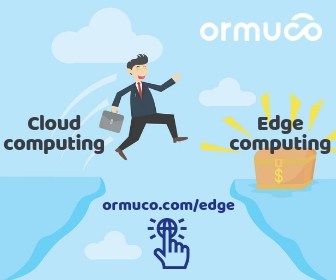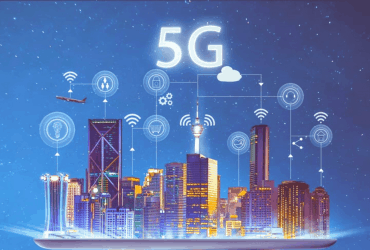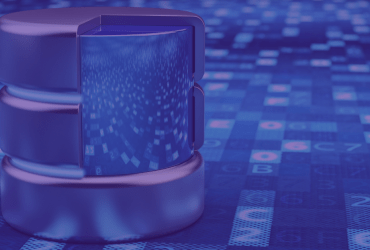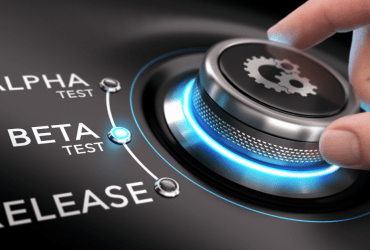Computing continues to shift away from large data centers towards the edge of the network. This is happening as more devices are now connected to the internet through faster networks. A great share of these devices being “smart”, there is a fundamental change in the way we understand, gather, process, and store data. In this article, we’ll be taking a look at this “intelligent edge” paradigm and explore its 6 fundamental principles.
What Is Intelligent Edge?
Edge computing focuses on IT solutions that gather data or perform different functions at the “edge” of a network. So when does the edge becomes intelligent?
Let’s start with an example. Cellphones have been integrating core functions for collecting and sharing data in the form of text messages or calls. Users have been manually dialing numbers, entering text on these edge devices, and initiating transmission.
Now, cellular technology has evolved from simple GSM[1] for voice and text transmission to LTE [2] and similar standards. These enhanced technologies have enabled mobile phones to become “smart” by integrating IP data transmission. Some of these applications are absolutely autonomous, as they record GPS localization, itineraries, time spent on an activity, or sync with other devices. Of course, this list is not exhaustive. And as you have noticed, there is no need for the user to manually enter information and initiate its collection or sharing of data, as it is all automated. Moreover, your smartphone will analyze the information, do calculations and take actions accordingly.
What do we understand from this example? Internet-connected edge devices have become absolutely autonomous and this makes them more powerful. They have become “intelligent”.
Intelligent edge thus refers to the concept of gathering and analyzing data directly at the edge of the network to power up solutions that maximize efficiency and productivity.
Principles Of Intelligent Edge
We have identified six primary principles of intelligent edge.
1. Shifting Computing Workloads to the Data Source
The intelligent edge requires the proliferation of smaller, edge-based cloudlets and devices which can handle large computing workloads on their own. They do not need to send all data back to a centralized data center for processing. This idea is at the heart of all edge computing. It is enabled by the ever-increasing processing capabilities and flexibility of smaller devices or appliances, and the overall sinking cost of computing.
2. Geographic “Nearness” to the Data Source
Everything happening “at the edge”, the cloudlets and devices need to be as close as possible to the data source, a hop away from the connected sensors. Coupled with higher network speeds that can deliver Gbps-range rates, this “nearness” is a guarantee for low latency. We have recently spoken of content delivery networks that support this concept.
3. Real-time Data Collection, Analysis and Storage
This is another important, fundamental principle for intelligent edge. Data must not just be collected and sent to a large data center for processing. The analysis and sorting of data is done close to the data source in real-time, to enable a more rapid turnaround time and lower latency. Read our article on IoT-powered transformation to get a clearer idea of this.
4. Filtering Critical and Non-critical Data
Adding to the above principle, intelligent edge enables critical data filtering. As it demands immediate attention, critical data will be processed locally and stored immediately for re-use. Non-critical data may be simply be discarded or, if relevant, sent to a far-away data center for archiving.
So, let’s look into a self-driving car. The input from its cameras, GPS systems, and other navigation systems is critical data, which must be acted upon and processed immediately. The temperature of the car’s cabin, its current fuel economy, and total mileage is non-critical data. It still may be useful, but these metrics are de-prioritized at the edge.
5. Horizontal Scalability
By definition, intelligent edge systems must be horizontally scalable. In other words, it must be possible to expand the power of an edge cloudlets by adding more resources and connect them together to work as a single, efficient logical unit. Take a look at our article for more details on what is a scalable solution.
6. Ability to Function with Sporadic Connectivity
Finally, intelligent edge systems must be able to handle network interruptions and, in some cases, power outages. The systems must continue to collect and store data when connectivity to the data network is down. Cloudlets and devices must be autonomous for their power supply. Moreover, when connectivity or power is back, all must prioritize data to send the most critical information first and continue the processes where they halted.
How to Start Your Intelligent Edge Project
The future of computing is in decentralization. While large, powerful data centers will remain important for some tasks, like archiving or bulk processing of of data, it’s likely that we will continue to see a rise in edge computing and fog computing.
If you would like to start a project in edge computing, we are the right partner to help you. With our intelligent Ormuco Edge solution, we are able to help you build a flexible, powerful and scalable platform that is made to integrate processing at the edge of the network. Contact us now for a demo!
1. Global System for Mobile communication
2. Long Term Evolution
3. Internet Protocol





